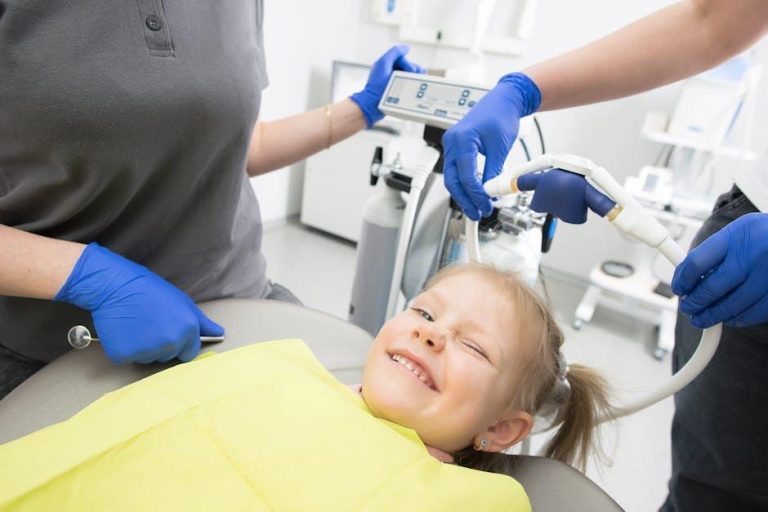1 in 3 Kids Has Dental Problems, Poll Finds – U.S. News & World Report
It may come as a surprise, but a recent poll conducted by U.S. News & World Report has uncovered a concerning truth about pediatric oral health in America: one in three children suffers from dental problems. This statistic sheds light on the urgency of improving dental care and hygiene habits among young kids across the nation.
The State of Pediatric Dental Health in the U.S.
Children’s dental health is a vital part of their overall well-being, affecting everything from nutrition to self-esteem. Despite advances in dental care, millions of kids struggle with issues such as cavities, tooth decay, and gum disease. According to the poll findings, approximately 33% of children have been diagnosed or show signs of dental problems.
Here’s a quick overview of the most prevalent dental issues reported:
| Common Dental Problem | Percentage of Kids Affected | Symptoms/Signs |
|---|---|---|
| Dental Cavities (Tooth Decay) | 25% | White or brown spots, holes in teeth, sensitivity |
| Gum Disease (Gingivitis) | 15% | Red, swollen gums, bleeding when brushing |
| Enamel Hypoplasia | 8% | Thin or pitted enamel, weaker teeth |
| Orthodontic Issues (Misalignment) | 20% | Crowded or crooked teeth, bite problems |
Why Are Dental Problems So Common Among Kids?
Several factors contribute to this dental health crisis, including lifestyle choices, diet, and access to care:
- Poor Dietary Habits: High sugar consumption in kids’ diets is a major culprit. Sugary snacks, sodas, and juices fuel bacterial growth that erodes tooth enamel.
- Inadequate Oral Hygiene: Children may not brush or floss properly or regularly, leading to plaque buildup and cavities.
- Lack of Regular Dental Visits: Preventive dental checkups are essential but often skipped due to cost, fear, or lack of awareness.
- Socioeconomic Barriers: Many families face challenges that limit access to quality dental care and education.
The Importance of Early Dental Care
Early intervention is the key to preventing most dental problems in children. Establishing good oral hygiene habits from the toddler years can drastically reduce the risk of future complications.
- Begin brushing as soon as the first tooth appears.
- Introduce flossing by age 2-3 to get kids accustomed early.
- Schedule dental visits by the child’s first birthday or within six months of their first tooth eruption.
- Monitor dietary intake to cut down on sugary foods and drinks.
Benefits of Preventive Pediatric Dental Care
- Reduces the risk of cavities and gum disease.
- Supports proper speech development and chewing.
- Prevents painful dental emergencies.
- Boosts confidence with a healthy, bright smile.
Practical Tips for Parents to Support Good Oral Health
Parents are the primary influencers of their child’s dental habits. Here are actionable ways parents can help:
- Make Brushing Fun: Use flavored toothpaste, colorful toothbrushes, or sing songs to encourage two-minute brushing sessions.
- Set a Routine: Brushing and flossing twice a day should be consistent parts of the child’s routine.
- Lead by Example: Brush and floss your teeth with your child to model healthy behavior.
- Limit Sugary Treats: Opt for fruits, vegetables, and water instead of sweets and soda.
- Stay Up-to-Date with Dental Visits: Keep appointments scheduled and discuss any oral health concerns with your dentist.
- Use Protective Gear: For kids playing sports, encourage wearing mouthguards to prevent injuries.
Real-Life Impact: A Parent’s Perspective
“When my son was diagnosed with several cavities at age 5, it was a wake-up call for our entire family,” says Sarah M., a parent from Ohio. “After switching his diet, improving his brushing routine, and regular dentist visits, his dental health has improved dramatically. I encourage every parent to be proactive because it really can make a difference.”
Conclusion: Addressing the Pediatric Dental Health Crisis
The revelation that 1 in 3 kids in the U.S. struggles with dental problems is a clarion call for parents, caregivers, and healthcare providers alike. Prioritizing pediatric dental health through education, preventive care, and healthy habits can dramatically reduce these statistics. With consistent effort and awareness, we can ensure that children grow up with strong, healthy smiles that last a lifetime.
For more information and support on children’s dental health, visit your local dental health professionals or check out resources from the American Dental Association (ADA).


